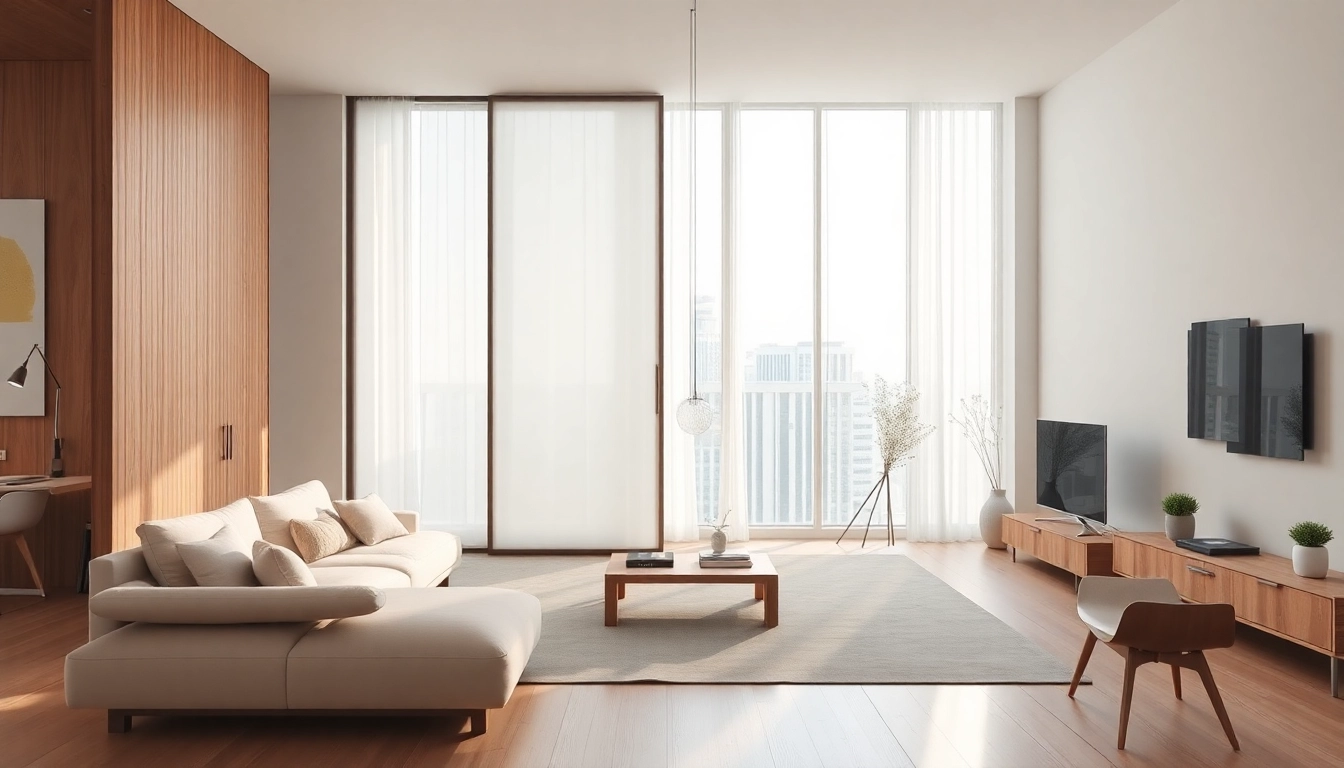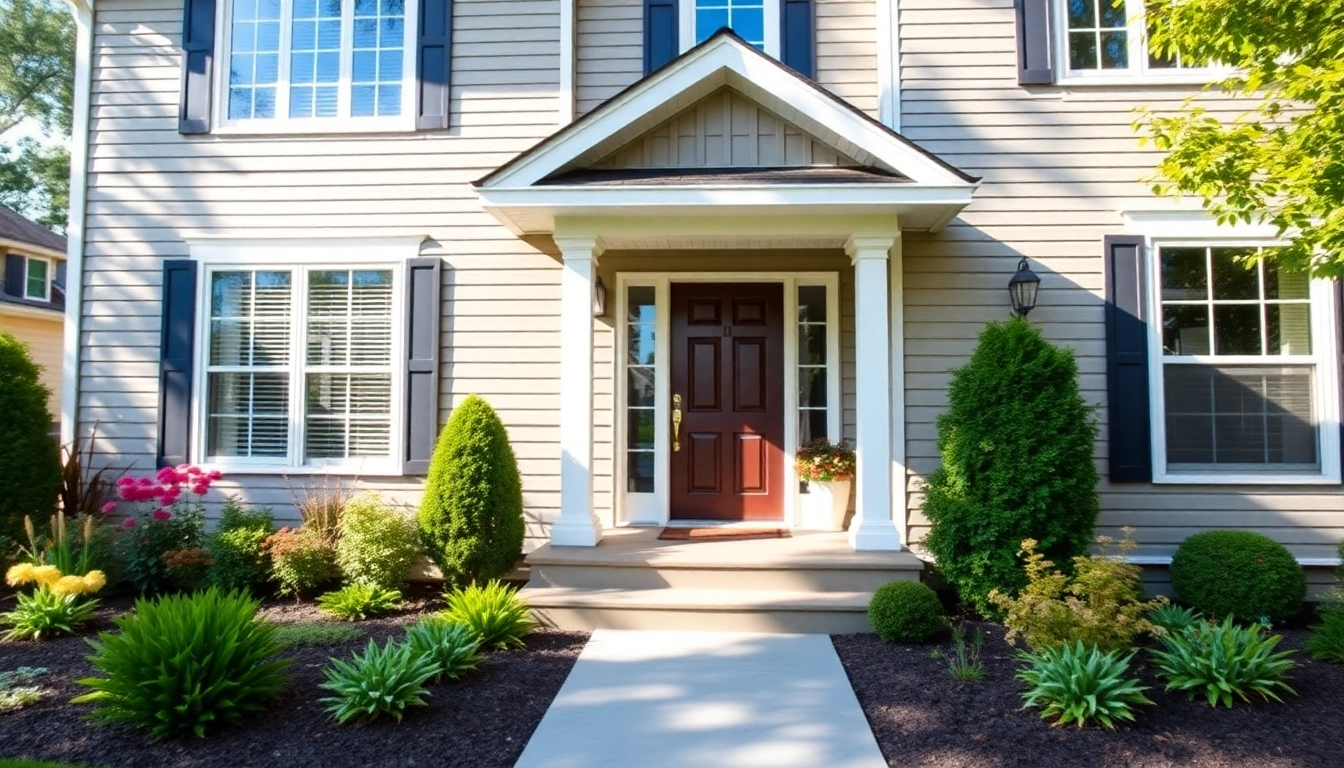Understanding Sliding Partition Walls
What is a Sliding Partition Wall?
A sliding partition wall is an innovative space management solution designed to create flexible environments. Functionally, these walls can be pushed or pulled to open or close off space, allowing users to reconfigure areas easily—ideal for homes, offices, and commercial spaces alike. Unlike traditional walls, which are static and fixed, sliding partition walls offer the versatility of adjustable space division without the headache of permanent construction or extensive renovations.
Benefits of Sliding Partition Walls for Homes
Integrating a sliding partition wall in the home can transform how spaces are utilized. The primary benefits include:
- Flexibility: Sliding partitions allow you to tailor your living space to fit various needs—host gatherings, work from home, or create private areas as needed.
- Space Saving: Unlike swinging doors, sliding partitions save significant space because they don’t require clearance for swinging open.
- Increased Natural Light: Transparent or translucent sliding wall options can maintain light flow between spaces while still offering a sense of separation.
- Aesthetic Appeal: Available in a variety of materials and designs, sliding partition walls can enhance the decor of any room.
- Cost-Effective: Compared to traditional wall construction, sliding partition systems can be a more budget-friendly option, reducing expenses related to materials and labor.
Common Materials Used in Sliding Partition Walls
Sliding partition walls can be constructed from an array of materials, each offering unique benefits:
- Wood: A traditional choice that provides warmth and beauty, wood can be stained or painted to match any decor.
- Glass: Ideal for modern spaces, glass sliding partitions create an open, airy feel. They come in framed or frameless designs.
- Metal: Durable and industrial in appearance, metal options are often used in commercial settings for their sleek finish.
- Fabric: Soft panels that can be hung from tracks, fabric options are excellent for creating a cozy ambiance while absorbing sound.
- Composite Materials: These can offer the aesthetics of wood or glass while being lighter and easier to handle.
Choosing the Right Sliding Partition Wall for Your Needs
Factors to Consider When Selecting
When choosing a sliding partition wall, consider the following factors:
- Purpose: Assess what you need the partition for—does it need to provide privacy, reduce noise, or create distinct zones?
- Space Constraints: Measure the area where the partition will be installed. Ensure that there is sufficient space for the partition to slide effectively.
- Style Preferences: Stylish designs and materials can enhance the look of your interior. Choose a design that complements existing decor.
- Budget: Prices can vary widely. Determine your budget beforehand and explore options that fit within it.
- Installation Options: Decide whether you will install the partition yourself or hire professionals, influencing material and product choices.
Comparing Different Styles and Designs
Sliding partition walls come in numerous styles and designs, suited for various tastes and needs:
- Single Track vs. Double Track: Single-track options are standard while double-track systems allow for more complex configurations, enabling multiple panels to run parallel.
- Folding Partitions: These can fold in on themselves and are a great space-saving solution.
- Top-Hung vs. Floor-Supported: Top-hung systems rely on a ceiling-mounted track, offering a clean look without floor tracks, while floor-supported systems can sometimes provide better sound insulation.
- Acoustic Panels: If sound insulation is important, consider thicker materials with soundproofing qualities.
Mechanical vs. Manual Systems: Which is Right for You?
When shopping for sliding partition walls, you’ll face the choice between mechanical (automated) and manual systems. Here’s a breakdown of considerations for both:
- Ease of Use: Automated partitions can be operated with a remote, allowing for effortless transitions. Manual systems might require physical effort to move.
- Cost: Mechanical systems often come at a premium price due to the added technology, while manual options are generally more budget-friendly.
- Installation Complexity: Automated systems may require professional installation due to electrical components, unlike more straightforward manual options.
- Maintenance: Mechanical systems could entail additional maintenance or troubleshooting compared to their manual counterparts.
Installation Process for Sliding Partition Walls
DIY Installation Tips and Tricks
Installing a sliding partition wall can be a rewarding DIY project. Here are some tips to help you navigate the installation process:
- Gather Proper Tools: Ensure you have a drill, level, measuring tape, and a stud finder before starting. This will make installation smoother.
- Follow the Manufacturer’s Instructions: Be sure to thoroughly read any included guidelines specific to your chosen product; they often include troubleshooting tips and essential warnings.
- Start with Wall Measurements: Measure your space accurately to determine where the track will be installed.
- Secure the Track Carefully: The stability of your partition relies heavily on a securely mounted track. Ensure it’s level before affixing it.
- Test Mechanism Functionality: Before completing installation, check to ensure that the sliding mechanism functions smoothly.
Professional Installation: What to Expect
If you’re opting for professional installation of your sliding partition wall, keep these expectations in mind:
- Assessment of Space: A professional will typically start with an assessment to determine the most effective installation method based on your space.
- Installation Timeline: Timeline for installation can vary but typically should be completed in one day depending on complexity.
- Quality Assurance: A professional will ensure all components function properly and make any necessary adjustments post-installation.
- Post-Installation Support: Reputable contractors often provide guidance or warranties for their work, which can be useful down the line.
Common Installation Mistakes to Avoid
To ensure a successful installation of your sliding partition wall, avoid these common pitfalls:
- Neglecting to Check Wall Structure: It’s essential to ensure that your wall can support the track and any additional weight that may come from the partition.
- Misalignment of Tracks: If tracks are not levelled correctly, the partition may not slide smoothly. Double-check alignment before finalizing installation.
- Rushing the Process: Take your time to ensure each part of the installation is done correctly; hurried installations often lead to mistakes.
- Ignoring Safety Precautions: Use safety glasses, ear protection, and be mindful of your surroundings when using power tools.
Maintaining Your Sliding Partition Wall
Regular Maintenance Tips for Longevity
Once your sliding partition wall is installed, regular upkeep can ensure its functionality and aesthetics. Here’s how to maintain it properly:
- Clean Tracks Regularly: Dust and debris can hinder the sliding mechanism. Use a vacuum or a damp cloth to keep tracks clean.
- Inspect Hardware Frequently: Periodically check bolts, screws, and hardware for wear and tear, tightening or replacing as needed.
- Lubricate Moving Parts: Applying a suitable lubricant to the tracks and rollers can prevent wear and enhance smooth operation.
- Avoid Obstructions: Ensure nothing blocks the sliding path of the partition, including furniture or other items.
How to Clean and Care for Your Partition Wall
Different materials require different cleaning techniques:
- Glass Panels: Use a glass cleaner or a mixture of vinegar and water for a streak-free shine.
- Wood Surfaces: Dust regularly and occasionally polish with a wood-friendly cleaner to maintain its finish.
- Fabric Panels: Vacuum regularly and spot treat stains with fabric cleaner as needed.
Signs Your Sliding Partition Wall Needs Repair
Stay vigilant for signs that your sliding partition wall may require repairs:
- Difficulty Sliding: If the partition sticks or is challenging to move, it may indicate a need for cleaning or lubrication.
- Visible Damage: Inspect regularly for cracks, chips, or warping in the material, which could compromise its integrity.
- Noise: Unusual noises during operation could signify mechanical issues or misalignment that need attention.
- Loose Hardware: If screws or bolts are coming loose, they need to be attended to immediately to prevent further damage.
Innovative Uses of Sliding Partition Walls
Creative Interior Layout Ideas
Here are some inventive ways to utilize sliding partition walls creatively:
- Home Office Setup: Create a dedicated home office space that can be closed off when work hours are over.
- Children’s Play Area: Use partitions to create a designated playroom that can be opened up during family gatherings or closed off for tidiness.
- Guest Spaces: Transform a single guest room into a multi-purpose area that can double as a study or meditation space.
- Seasonal Adjustments: Thin and light partition panels can easily help you adjust to seasonal needs for warmth and privacy.
Using Sliding Partitions in Commercial Spaces
Sliding partition walls are an ideal solution for commercial applications, providing dynamic environments in places like:
- Event Spaces: Create flexible room setups that can accommodate various functions such as weddings, conferences, or exhibitions.
- Restaurants: Use sliding partitions to adjust dining areas based on crowd sizes, enhancing both comfort and service efficiency.
- Offices: Foster collaborative work environments by designing openness that can be adjusted for presentations or team meetings.
- Retail Stores: Manage customer flow by creating different shopping zones, enhancing the customer experience.
Incorporating Technology for Enhanced Functionality
Leverage modern technology for sliding partition walls. Here are some suggestions:
- Smart Controls: Automate your partition walls with smart technology that allows you to operate them via smartphone apps or home assistants.
- Soundproofing Solutions: Use technology-enhanced materials that improve sound insulation, ideal for offices or studios.
- Integrated Lighting: Consider designs that incorporate lighting elements, that can enhance the ambiance while retaining range in space management.
- Modular Systems: Utilize modular systems that allow for the easy rearrangement or installation of additional panels, adapting to changing needs seamlessly.



